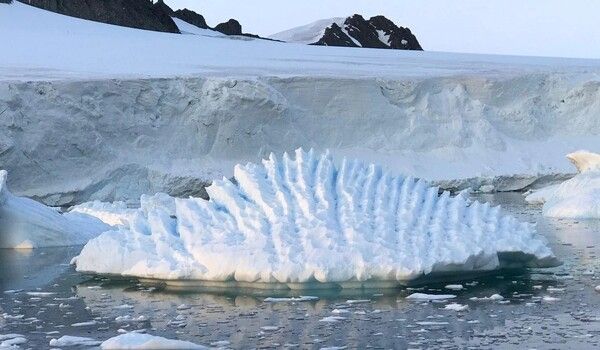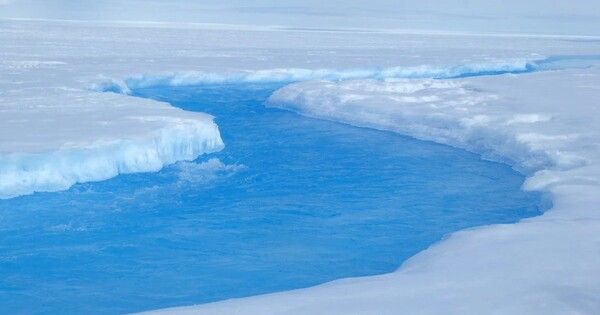Undersea ice anchors that help keep Antarctica’s land ice from slipping into the ocean are disappearing at a rate more than twice that of 50 years ago, according to new research. According to specialists, more than a third of these frozen moorings, also known as pinning points, have shrunk in size since the turn of the century.
Scientists warn that if pinning points, which hold the floating ice sheets that strengthen Antarctica’s land ice, deteriorate further, the continent’s contribution to rising sea levels will increase. Floating ice sheets edge 75% of Antarctica’s coastline and encompass an area the size of Greenland.
The findings are part of the first-ever study of changes in the thickness of Antarctic ice shelves — extensions of land ice that float on the ocean — stretching back to 1973. Previous observations only date from 1992.
The shift over the last 50 years from relatively limited and regionally concentrated ice shelf melt to considerably more widespread unanchoring is startling. The continuous question is how many more of these critical pinning sites will slip away in the next 50 years.
Dr. Bertie Miles
Researchers at the University of Edinburgh used satellite imagery from the NASA/United States Geological Survey (USGS) Landsat program’s fifty-year archive to study changes in the appearance of pinning points on the ice’s surface. Pinning points arise when a portion of a floating ice sheet anchors to an elevation on the ocean floor, causing a noticeable hump on the otherwise smooth ice shelf top.
Using changes in pinning points as a valid proxy for differences in ice shelf thickness, the researchers examined changes in these features throughout three time periods: 1973-1989, 1990-2000, and 2000-2022.
The scientists found that only 15 percent of pinning points reduced in size from 1973 to 1989, leading to small localized pockets of thinning ice shelves. However, a widespread acceleration and unanchoring of ice shelves from pinning points began in the 1990s in the western Antarctic Peninsula and the Amundsen Sea. The number of pinning points that shrank increased to 25 percent from 1990 to 2000 and 37 percent from 2000 to 2022.

The paper, published in Nature, was funded by the Leverhulme Trust.
Lead author Dr. Bertie Miles, Leverhulme Early Career Fellow, School of GeoSciences, University of Edinburgh, stated, “The shift over the last 50 years from relatively limited and regionally concentrated ice shelf melt to considerably more widespread unanchoring is startling. The continuous question is how many more of these critical pinning sites will slip away in the next 50 years.”
Professor Robert Bingham, Professor of Glaciology and Geophysics, School of GeoSciences, University of Edinburgh, said: “What we’re seeing around Antarctica is a sustained attack by climate warming on the buttresses that slow the conversion of ice melting into global sea-level rise.” This emphasizes the importance of taking action wherever possible to minimize global carbon emissions.
















